Step onto the court and prepare to unleash your competitive spirit! In the world of racquet sports, two challengers reign supreme: pickleball and racquetball. While they may sound similar, don’t be fooled! These two sports each offer a unique set of rules, strategies, and skills that set them apart. So, whether you’re a seasoned player or a curious beginner, it’s time to dive into the ultimate showdown between pickleball and racquetball. Strap on your wrist guards, grab your paddles, and get ready to unravel the exhilarating differences that make these sports a smashing success!
What is Pickleball? Rules and Equipment
Pickleball is a popular paddle sport that combines elements of tennis, badminton, and Ping-Pong. It can be played as a singles or doubles game and is suitable for all ages and skill levels. The game was invented in 1965 by Joel Pritchard, Bill Bell, and Barney McCallum in Bainbridge Island, Washington.
Gameplay
Pickleball is played on a badminton-sized court with a low net in the middle. The game starts with an underhand serve and the ball must bounce once on each side before volleys can be made.
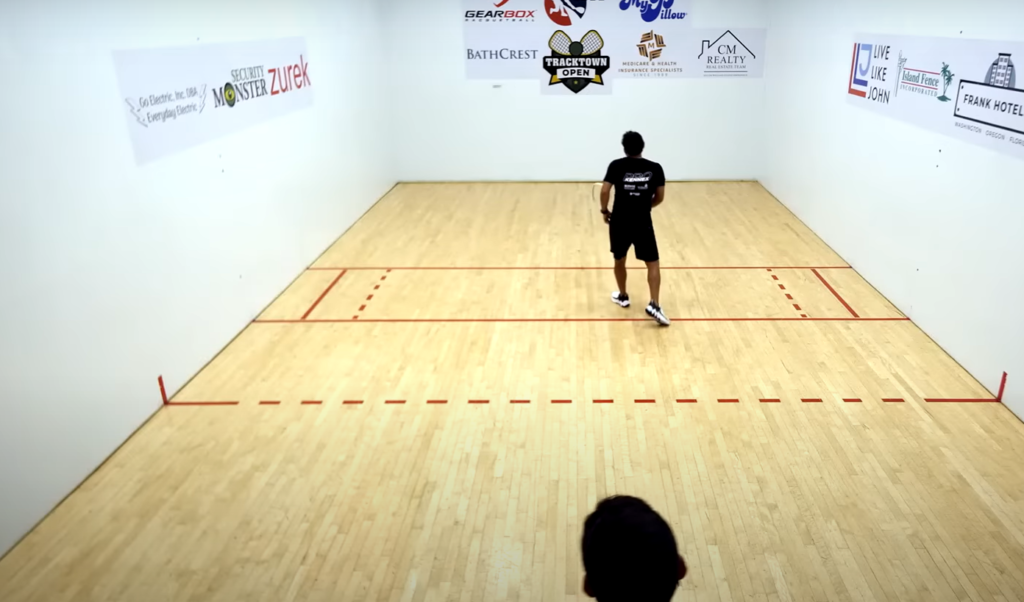
Players can also choose to let the ball bounce twice on their side before hitting it back, similar to double-bounce rules in Ping-Pong. The game continues until one team reaches 11 points and has a lead of at least two points.
Equipment
Pickleball is played with a paddle made of wood, composite materials, or graphite. The ball used is similar to a Wiffle ball but slightly smaller and harder. It is designed to slow down upon impact, making it easier for players to hit and control. The court can be made of various surfaces, including concrete, asphalt, or indoor gym floors. Players are also required to wear proper athletic shoes and comfortable clothing. Some players may also choose to wear protective gear such as knee pads or elbow pads for added safety.
Rules
Pickleball has specific rules designed to keep the game fair and enjoyable for all players. One of the key rules is the “non-volley zone,” also known as the “kitchen.” This is a seven-foot area on either side of the net where players are not allowed to enter and hit volleys from. This rule prevents players from gaining an unfair advantage by being too close to the net.
Another important rule is that only the serving team can score points. If the receiving team wins a rally, they do not get a point but instead, gain the opportunity to serve. This promotes longer rallies and strategic gameplay.
In addition to these main rules, there are also specific guidelines for serving, scoring, and out-of-bounds shots. It is important for players to familiarize themselves with all of the rules before playing to ensure a fair and enjoyable game [1].
Pickleball is a fun and inclusive sport that can be played by people of all ages and abilities. Its unique combination of elements from various sports makes it both challenging and exciting for players. With proper equipment, understanding of the rules, and some practice, anyone can pick up a paddle and enjoy a game of pickleball with friends or family.
What is Racquetball? Rules and Equipment
Racquetball Overview
Racquetball is a fast-paced indoor racket sport that can be played by people of all ages and skill levels. It was invented in 1950 by Joe Sobek, who wanted to create a game that would combine elements of tennis, handball, and squash.
The objective of the game is to score points by hitting the ball in such a way that your opponent cannot return it before it bounces twice on the floor.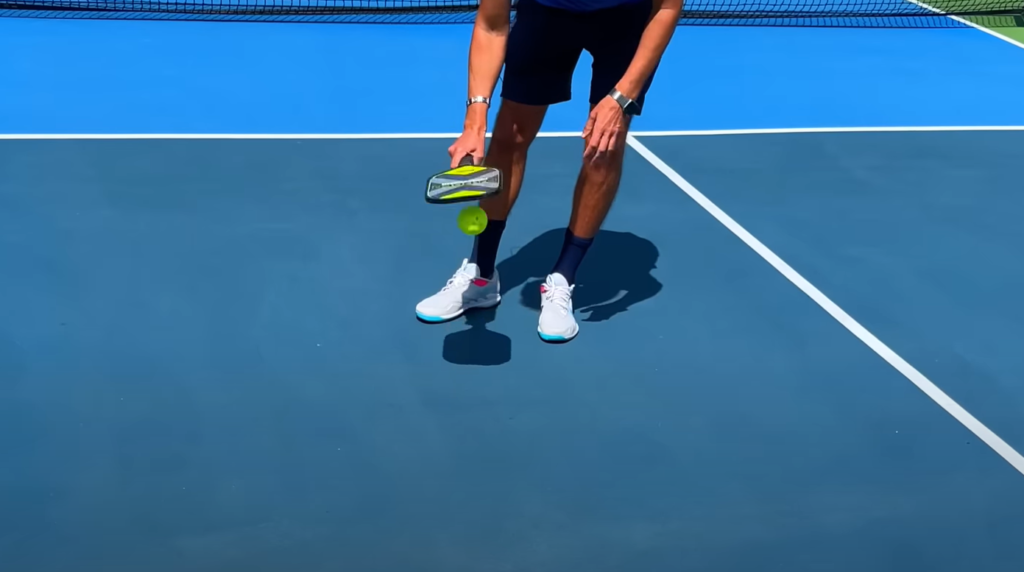
Racquetball can be played as singles (one player against another) or doubles (two players per team). It requires a combination of speed, agility, and strategy, making it a challenging and exciting sport to play.
Rules of Racquetball
The rules of racquetball are fairly simple and easy to understand. Here are some key rules to keep in mind while playing:
- A match is typically played as the best out of three games.
- The first two games are played to 15 points, and the tiebreaker game (if needed) is played to 11 points.
- The ball must be served from within the service zone and hit the front wall first before touching any other walls.
- After the serve, players can hit the ball off any wall, as long as it bounces on the floor before their opponent can return it.
- If the ball bounces twice before your opponent can hit it, you win the rally and earn a point.
- Players have up to three hits to return the ball (including the initial serve).
- If the ball hits any part of your body or clothing, it is considered a point for your opponent.
- A player must let their opponent get out of the way if they are in the way of their shot.
- If a player commits a fault (such as touching the ceiling or stepping outside the court boundaries), it results in a point for their opponent.
These are just some of the basic rules of racquetball. For more detailed and specific rules, you can refer to the official rulebook of your local or national racquetball organization.
Equipment Needed
To play racquetball, you will need some essential equipment. Here is a list of the basic equipment required to get started:
- Racquet: A racquetball racket is smaller and shorter than a tennis racket, with a larger head and thicker strings. It typically weighs between 170 to 185 grams and is made of lightweight materials such as graphite, aluminum, or titanium.
- Ball: A racquetball is a hollow rubber ball with a diameter of about 2.25 inches and a weight of around 1 ounce. It comes in different colors (usually blue, red, black, or green) indicating the level of play.
- Protective Eyewear: Eye protection is mandatory while playing racquetball as the ball can travel at speeds of up to 200 mph. Protective eyewear specifically designed for racquetball is required for all players.
- Court Shoes: To move quickly and efficiently on the court, you will need a good pair of non-marking shoes with good traction and ankle support.
- Clothing: Comfortable and breathable athletic clothing is recommended for playing racquetball. Avoid wearing any jewelry or clothing with zippers or buttons that may interfere with your movement.
- Gloves (optional): Some players prefer to wear gloves to improve their grip on the racquet and prevent blisters. This is a personal choice and not mandatory.
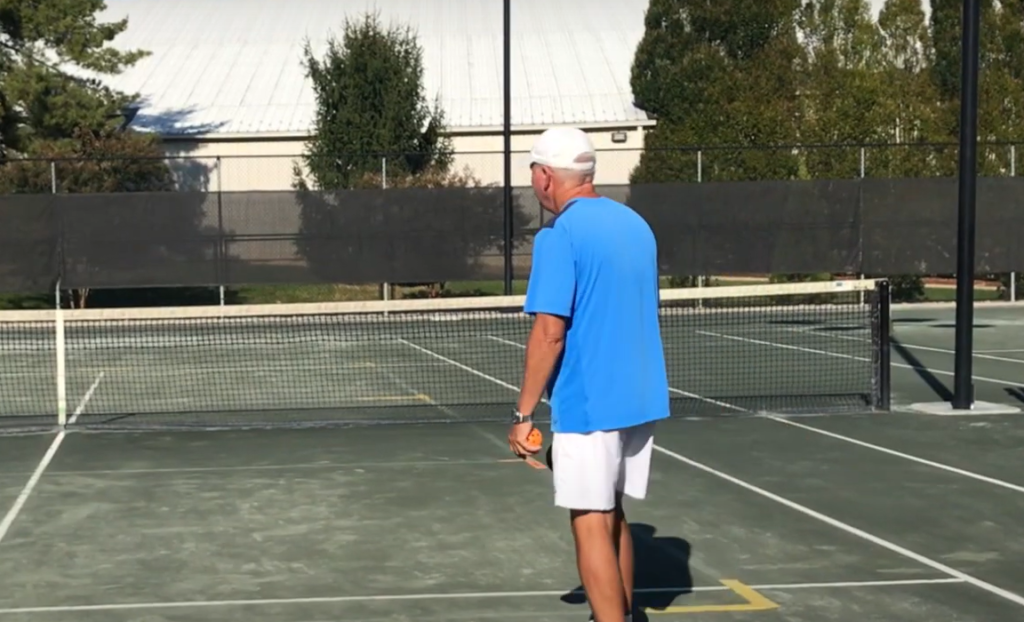
Now that you know the basics of what is required to play racquetball, it’s time to grab your gear, hit the court and have some fun! Remember to always follow the rules and play safely [2].
What Are the Differences Between Racquetball and Pickleball?
Paddles
Both racquetball and pickleball use paddles to hit the ball, but there are some key differences between the two. Racquetball paddles are typically longer, thinner, and more flexible than pickleball paddles. This allows for greater control and power when hitting the ball in a small court. On the other hand, pickleball paddles have a shorter and wider shape with a solid surface. This design is ideal for the slower pace of pickleball and the need for more precise shots. The paddles are usually made of different materials as well, with racquetball paddles being made of lightweight graphite or carbon fiber and pickleball paddles being made of wood or composite materials.
Balls
Another difference between racquetball and pickleball is the type of ball used. Racquetball balls are small, heavy, and bouncy while pickleball balls are larger, lighter, and less bouncy. The smaller and heavier racquetball ball travels faster, making the game more fast-paced and intense.
Pickleball balls, specifically designed for this unique sport, are larger and slower compared to traditional balls. This deliberate design choice allows players to engage in longer rallies, fostering a more strategic and exciting gameplay experience. These specialized balls are typically crafted from durable plastic material and feature small holes, reminiscent of a wiffle ball, providing players with a distinct feel and enhancing their control and precision on the court [3].
Court Size
One of the most notable differences between racquetball and pickleball is the size of their courts. A racquetball court is much larger at 20 feet wide by 40 feet long with a ceiling height of 20 feet.
This smaller court size requires players to be more precise with their shots and movement.Scoring
The scoring systems for racquetball and pickleball differ in several ways. In racquetball, players can only earn points when serving, and the game is won by the first player to reach 15 points. On the other hand, in pickleball, points can be scored by both the serving and receiving team, adding an extra layer of strategy and excitement to the game.
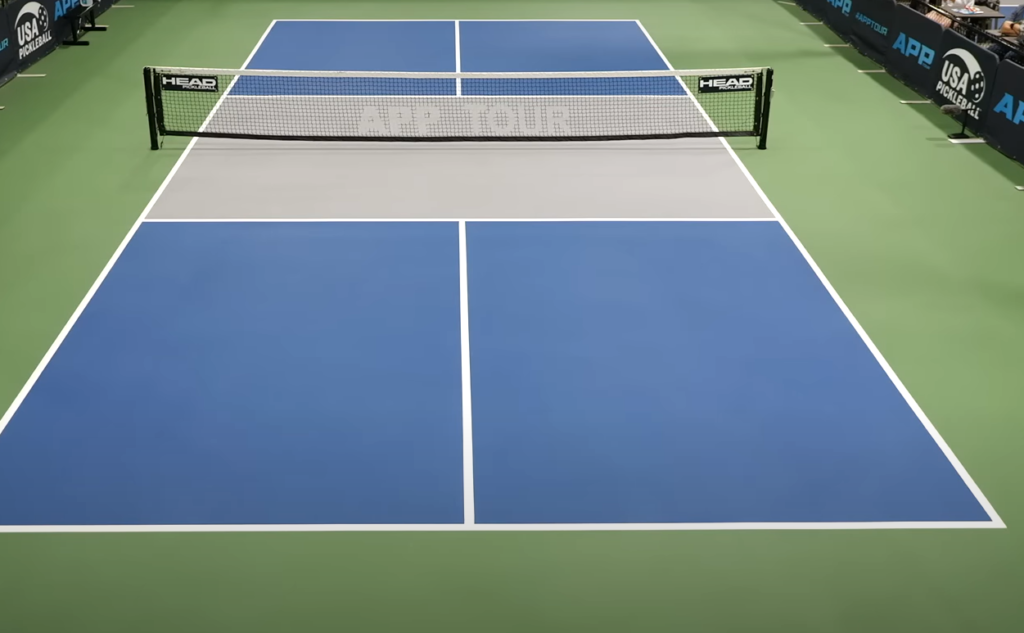
The specific number of points required to win can vary, with games ending at either 11 or 15 points depending on the league or tournament rules in place. This variation in scoring rules adds an element of flexibility and adaptability to pickleball, allowing players to tailor the game to their preferences and skill level.
Strategy
Due to the differences in equipment and court size, the overall strategy for racquetball and pickleball also differ. In racquetball, players typically try to hit the ball low and hard against the walls, creating unpredictable bounces for their opponent. This aggressive approach requires players to anticipate and react quickly to the ball’s trajectory, making split-second decisions to maintain control.
On the other hand, pickleball is a slower-paced game that emphasizes finesse and control. Players must carefully execute their shots, delicately placing the ball in strategic locations to outmaneuver their opponents. The longer rallies in pickleball allow for more opportunities to showcase skillful shot placement and strategic play.
With these contrasting strategies, racquetball and pickleball offer unique challenges and gameplay experiences. Whether you prefer the fast and intense nature of racquetball or the precise finesse of pickleball, both sports provide engaging and enjoyable ways to test your skills on the court.
Serve Factor
Serving is a critical aspect in both racquetball and pickleball, playing a significant role in the dynamics of each game. However, the rules and techniques for serving differ between the two sports, contributing to their unique playing experiences.
In racquetball, players must execute an underhand serve from behind the service line, ensuring the ball is struck above their waist. This technique requires precision and control, as players aim to deliver a powerful serve to gain an advantage over their opponent.
On the other hand, pickleball allows players more flexibility in serving styles. They can opt for an underhand or overhand serve from anywhere behind the baseline, with the ball being struck below the waist. This versatility adds an element of creativity to the game, as players can strategize and vary their serves to disrupt their opponent’s rhythm.
The difference in serving styles not only affects the technical aspects of the game but also influences the overall pace and style of play in racquetball and pickleball. Whether it’s the controlled finesse of a racquetball serve or the dynamic versatility of a pickleball serve, mastering the art of serving is crucial in both sports for achieving success on the court.
Should You Play Pickleball or Racquetball?
When it comes to racquet sports, there are many options to choose from. Two popular ones include pickleball and racquetball. Both of these games require a racquet and a ball, but they have distinct differences that make them unique.
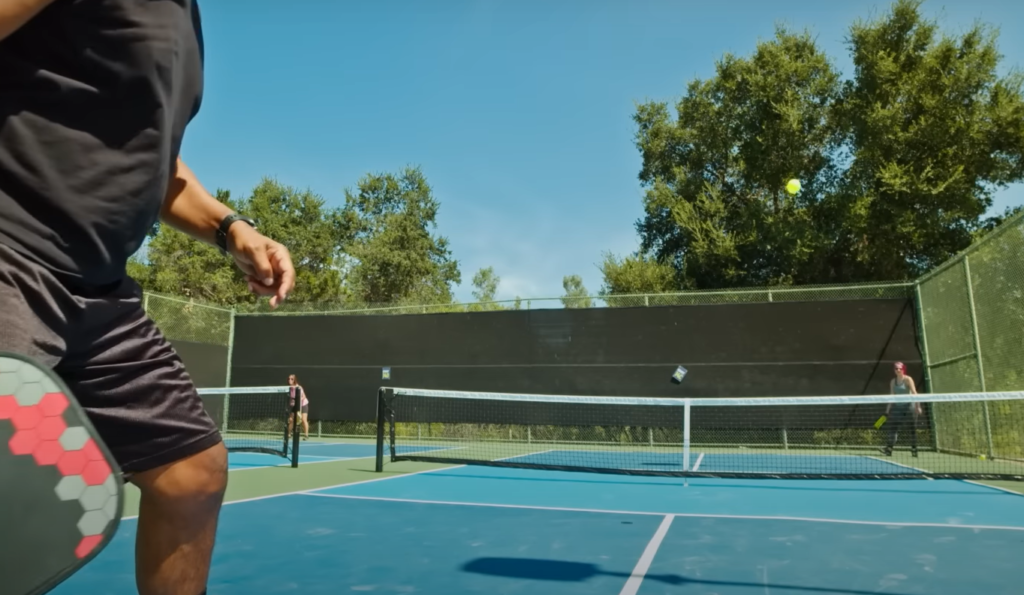
Pickleball is a relatively new sport that combines elements from tennis, badminton, and ping pong. It is played on a smaller court, using a solid paddle and a plastic ball with holes. Racquetball, on the other hand, has been around for over 50 years and is played on an indoor court with walls and ceilings that players can use to bounce the ball off of.
One factor to consider when deciding between pickleball and racquetball is the level of physical activity. Both games are great for cardio and can help improve hand-eye coordination, but racquetball tends to be more physically demanding. The smaller court size in pickleball means less running and faster points, while the larger court in racquetball allows for longer rallies and more movement.
Another aspect to think about is the level of skill required for each game. Pickleball may seem simpler with its smaller court and slower pace, but it still requires precision and strategy. Racquetball, on the other hand, involves more complex shots such as ceiling balls and kill shots that require a higher skill level.
Some players may prefer one game over the other based on their personal preferences. Pickleball is known for its social aspect and is often played in doubles teams, making it a great way to meet new people and stay active. Racquetball, on the other hand, is often played individually and can be a more competitive experience.
Ultimately, the decision between pickleball or racquetball comes down to personal preference and what you are looking for in a sport. Both offer a fun and challenging experience that can improve physical fitness and mental sharpness. So why not give both a try and see which one you enjoy more? Who knows, you may even end up playing both! So get out there, grab your racquet and ball, and start hitting!
Can You Play Pickleball on a Racquetball Court?
Pickleball has been experiencing a tremendous surge in popularity in recent years, captivating the interest of not only the younger generation but also older adults. This exhilarating sport seamlessly blends the best elements of tennis, badminton, and ping pong, resulting in a truly unique and captivating game that can be enjoyed by individuals of all ages and proficiency levels.
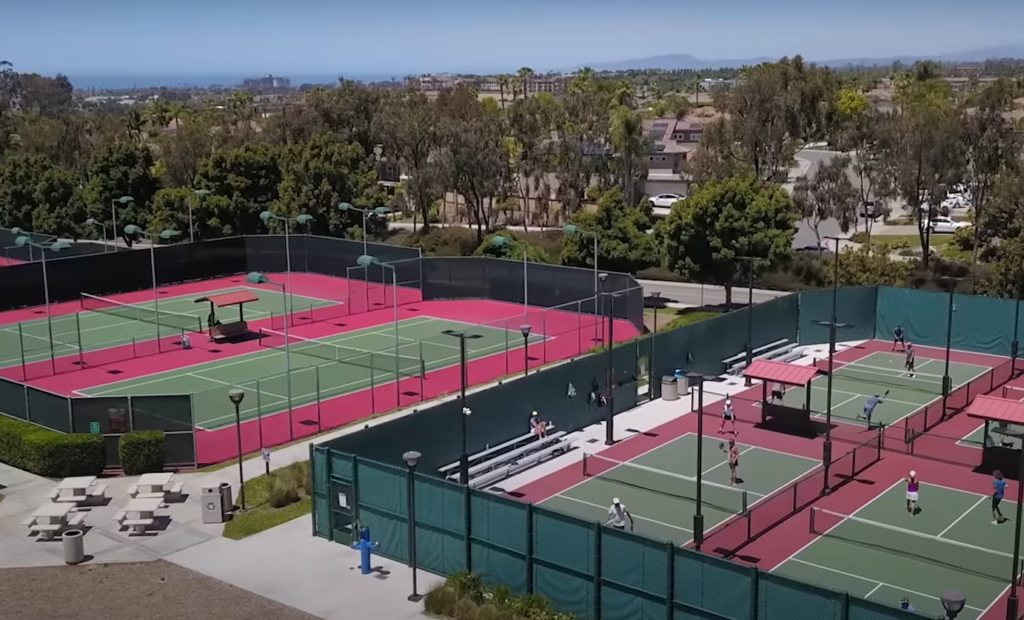
If you find yourself among the growing number of pickleball enthusiasts, you might be curious about the possibility of playing this sport on a racquetball court. It’s worth noting that both sports share the similarity of utilizing a racquet to strike a ball within a confined space. As such, the answer is yes – you can indeed play pickleball on a racquetball court.
Understanding these nuances will help you navigate the game more effectively and maximize your enjoyment as you engage in pickleball on a racquetball court.FAQ
Is there a difference between pickleball and paddle ball?
There is a difference between pickleball and paddle ball. Although both sports involve using paddles, the rules, court dimensions, and equipment differ.
Pickleball was invented in 1965 by Joel Pritchard, Bill Bell, and Barney McCallum as a backyard game for children. It combines elements of tennis, badminton, and ping pong. The court size is smaller than a tennis court, and the ball used is similar to a wiffle ball. The paddles are made of wood or composite materials and have a larger surface area compared to paddle balls.
Paddle ball, on the other hand, originated in New York City in the 1920s as an indoor game for adults. It is played on a handball or racquetball court with a hard rubber ball and paddles made of wood, aluminum, or composite materials. The objective of the game is to hit the ball against the wall and prevent your opponent from returning it.
Is pickleball suitable for all ages?
Yes, pickleball is suitable for all ages! It is a low-impact sport that can be enjoyed by children, adults, and seniors alike. In fact, it has become increasingly popular among older adults due to its social and physical benefits.
Pickleball is a great way for people of all ages to stay active and improve their overall health. It improves hand-eye coordination, agility, and balance. Plus, the smaller court size makes it easier for beginners or those with limited mobility to play. Many retirement communities now have pickleball courts, and it is also commonly played in schools and recreation centers.
Why do people still play racquetball?
Despite the rise in popularity of sports like pickleball and paddle ball, many people still enjoy playing racquetball. This could be due to a number of reasons, such as personal preference or accessibility.
Racquetball is a fast-paced, high-intensity sport that provides a great workout for players. It also has a strong community of dedicated players who continue to support and promote the sport. Additionally, racquetball courts are more widely available than dedicated pickleball or paddle ball courts, making it easier for people to play.
What equipment do I need to play pickleball?
To play pickleball, you will need a paddle, a net, and a ball. Paddles can range from $20-$150 depending on the material and quality. The net can be purchased separately or as part of a set, and the price ranges from $50-$150. Pickleballs are similar in cost to tennis balls, typically ranging from $3-$5 per ball.
Aside from equipment, you may also want to consider wearing appropriate athletic shoes and comfortable clothing. It is recommended to wear court shoes with good support and traction to prevent injuries on the court. Some players also choose to wear protective eyewear while playing.
What is a pickleball racket called?
A pickleball racket is simply called a “paddle.” This term is used interchangeably with “racquet” or “bat” in other sports, but in pickleball, it is most commonly referred to as a paddle. It is important to note that unlike traditional tennis rackets, the paddle does not have strings and instead has a solid surface made of wood or composite materials. So, it is important to choose a paddle that is comfortable and suits your playing style.
Additionally, there are different types of paddles available for different skill levels and preferences. Beginners may opt for a lighter and larger paddle with a larger sweet spot, while more advanced players may prefer a heavier and smaller paddle for more control and power.
What sport is closest to pickleball?
Pickleball is often compared to other racquet sports such as tennis, badminton, and table tennis. It shares similarities with these sports in terms of equipment and rules. However, the most similar sport to pickleball is arguably paddle ball.
Paddle ball uses a similar type of paddle and involves hitting a ball against a wall or backboard. Both sports also have a smaller court size compared to tennis and use a ball with holes, making them both popular choices for those seeking a less physically demanding alternative to traditional racquet sports. So, if you enjoy pickleball, you may also enjoy trying out paddle ball!
Useful Video: Transitioning from Racquetball to Pickleball?
Conclusion Paragraph
So, both Pickleball and Racquetball are great sports that help people to get fit and have fun at the same time. They both have their own unique characteristics and appeal to different types of players. Whether you prefer the slower pace and strategy of Pickleball or the fast-paced action of Racquetball, both sports offer great benefits for physical health and social interaction. In conclusion, Pickleball and Racquetball are two popular racket sports that continue to gain popularity and bring joy to people of all ages.
References:
- https://www.news-leader.com/story/sports/2022/07/11/pickleball-courts-near-me-paddle-rules-scoring-how-play/7822667001/
- https://www.racquetballwarehouse.com/learning-center/how-to-play-racquetball.html
- https://doyourspin.com/pickleball/pickleball-vs-racquetball-all-you-need-to-know/





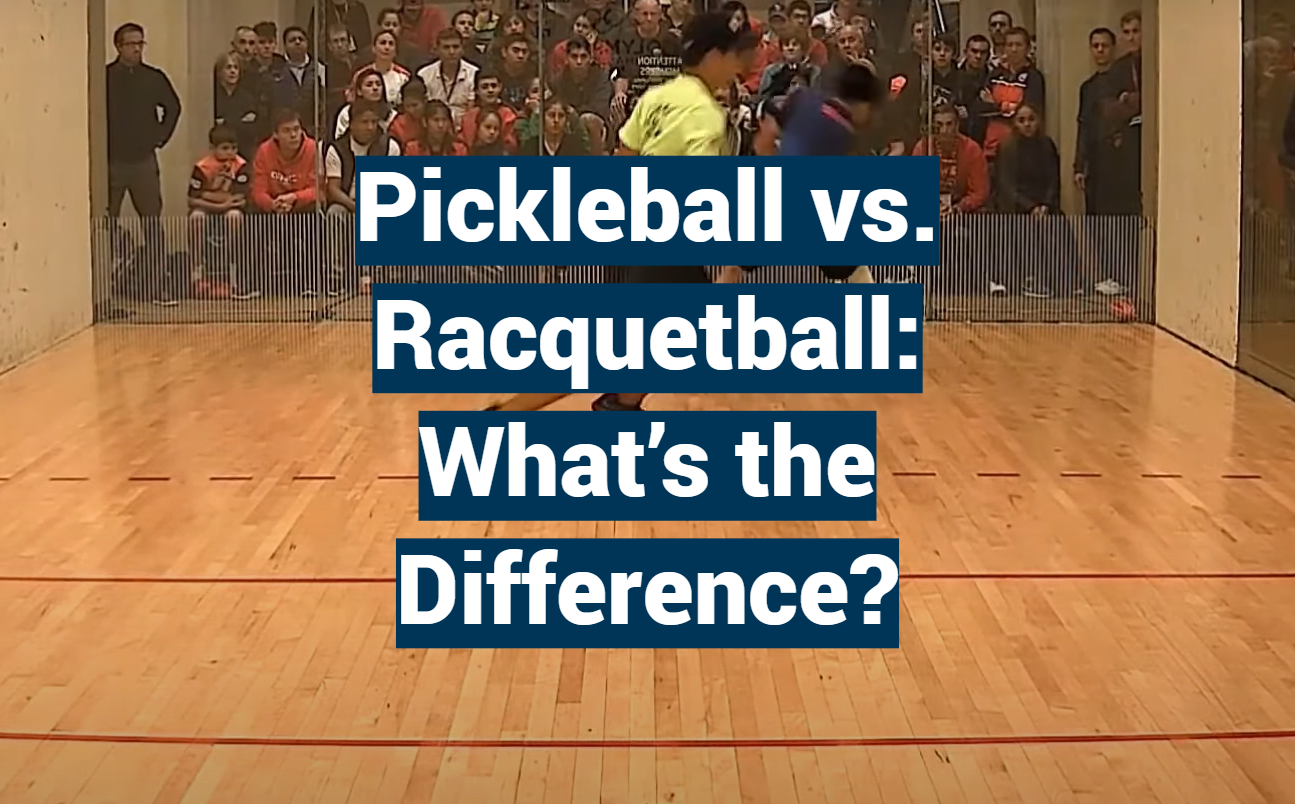
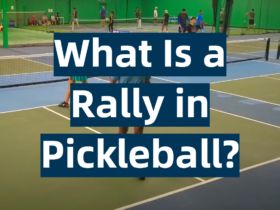
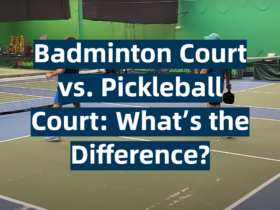
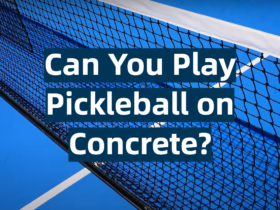
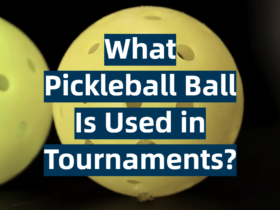
Leave a Review